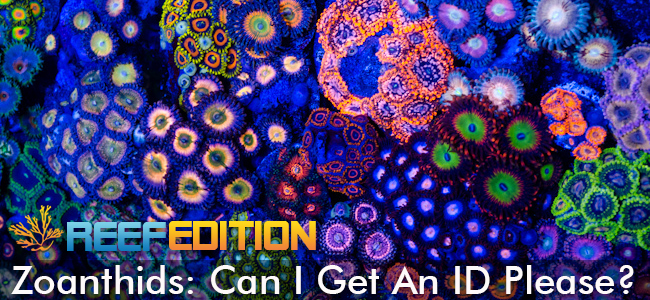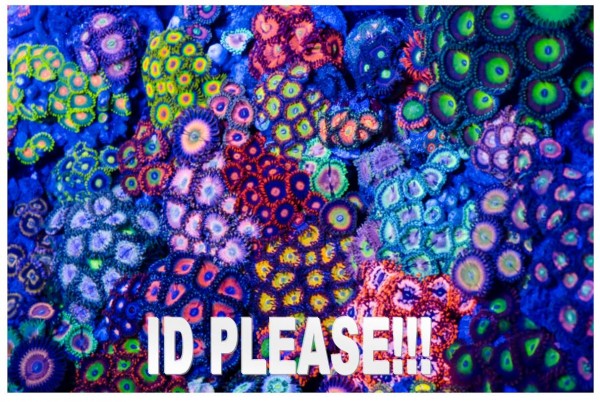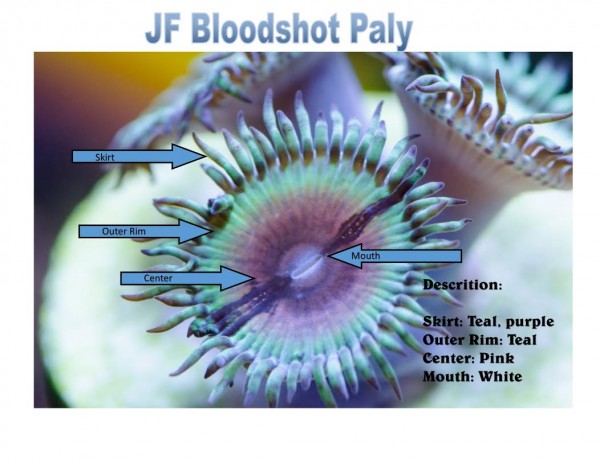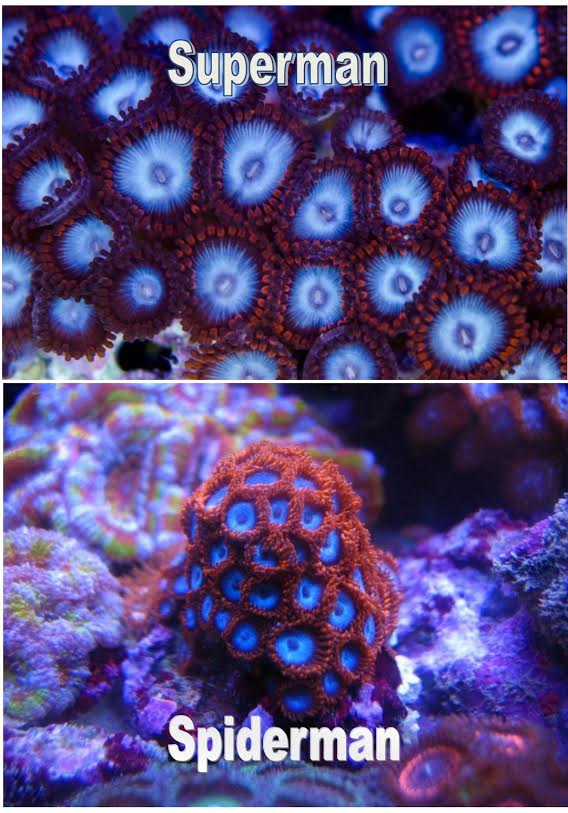Zoanthids: Can I Get An ID Please?

Today, I want to write about how to properly identify zoas. And, no, I’m not going to get into the physiology of differentiating between a zoa and a paly. I am going to discuss how to properly describe the colors in a zoa. This is in an effort to be able to get a proper ID from our Reef2Reef peers.
I do not want to talk about names. The reason for this is almost every zoa out there has at least several different names (other than some of the older morphs).
I get dozens of people sending me requests weekly to identify zoas. About 95% of the time, I get a picture. However, many people struggle to take a proper picture, and on some occasions I can’t even tell if there’s a coral in the picture. Most of the time when I ask people to describe the picture, they are not able to describe it to me. This makes identifying the zoa very difficult.

(For those who want help with taking pictures, we have a great tutorial on taking pics with a cellphone: “Club Zoa Tutorial Taking Pics with Cellphone.”) However, even if the picture is great, sometimes we see one color while the camera captures another.
I took this picture to help everyone with identifying the different parts of the zoa. Maybe we can learn to describe a part of the zoa so we can all understand each other a little bett
As you can see, the skirts can have different colors, speckles, lines, or are solid. The outer rim can have lines or solid colors. The inner part or center can sometimes have a ring or be a different color than the rest of the center.
Let’s play with a few examples:

Take the Superman and the Spiderman zoas. They are both red and blue. But to people who have both, they can tell that the Supermans are bigger. They also have long stems. While the Spidermans have a dark blue center and grow very close together in a mat.
But let’s go a little more in depth. My favorite zoa is the Sunny D. The Sunny D’s are often mistaken for the Vivid Rainbow zoas because they are very similar. Most people can’t tell them apart. If you look close at the Sunny D’s, they have a speckled skirt, very thin pink outer ring, then orange inter-crossed with green and a green center. Vivid Rainbows have faint green lines in the skirt, a peach outer ring, then orange and a green center. But why would someone want to differentiate a Sunny D from a Vivid Rainbow? Because Sunny D’s grow very fast and sell for about $5-$10 per polyp. On the other hand, the Vivid Rainbows grow a lot slower. This means that they can fetch a higher price. You can see the price for them go as high as $80 per polyp on some ridiculous bidding sites. Learning to differentiate these zoas by spotting these small differences helps you more accurately identify zoas.
 All in all, there are way too many zoas out there. There are even more new morphs coming out every month. I really wish I could get them all and have a giant tank with all the flavors of the rainbow. We at Reef2Reef are working on having an amazing ID site to help all of you with the identification process, and with your help we can make it extraordinary. I hope you enjoy your beautiful zoas and see you around.
All in all, there are way too many zoas out there. There are even more new morphs coming out every month. I really wish I could get them all and have a giant tank with all the flavors of the rainbow. We at Reef2Reef are working on having an amazing ID site to help all of you with the identification process, and with your help we can make it extraordinary. I hope you enjoy your beautiful zoas and see you around.
For more discussion on zoanthids and palys please visit our Zoanthid forum here.
Comments are closed.
